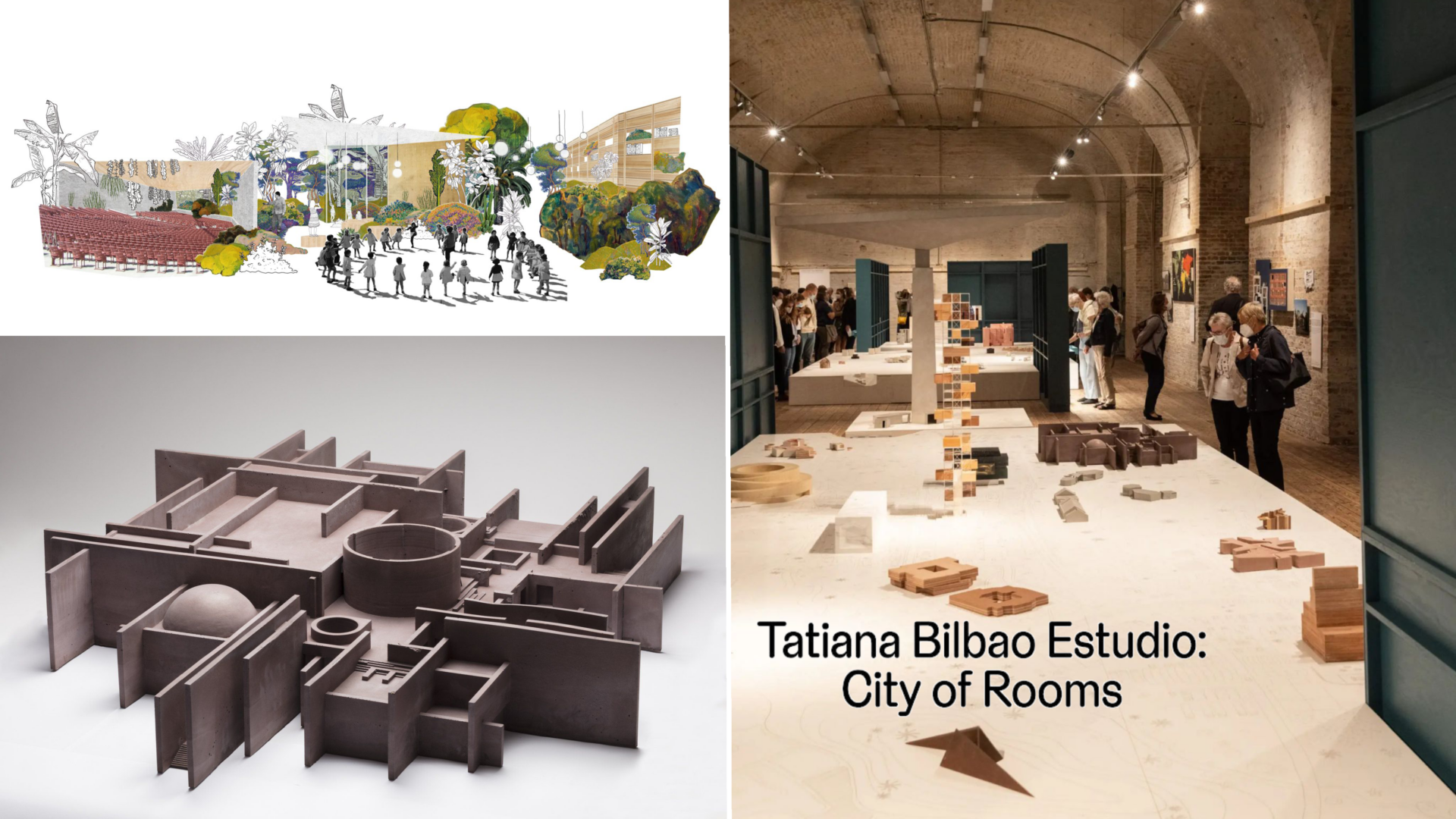Physical models—scaled prototypes of the finished architectural work—are still important for architects as they develop their ideas. In this post we will show our favorite physical models at Fisher ARCHitecture. Below is a collaboration between fashion designer Iris Van Herpen and architect Philip Beesley. On the left you can see two of his preliminary models. On the right you can see the result, a 3D printed dress worn by a real “top model”!
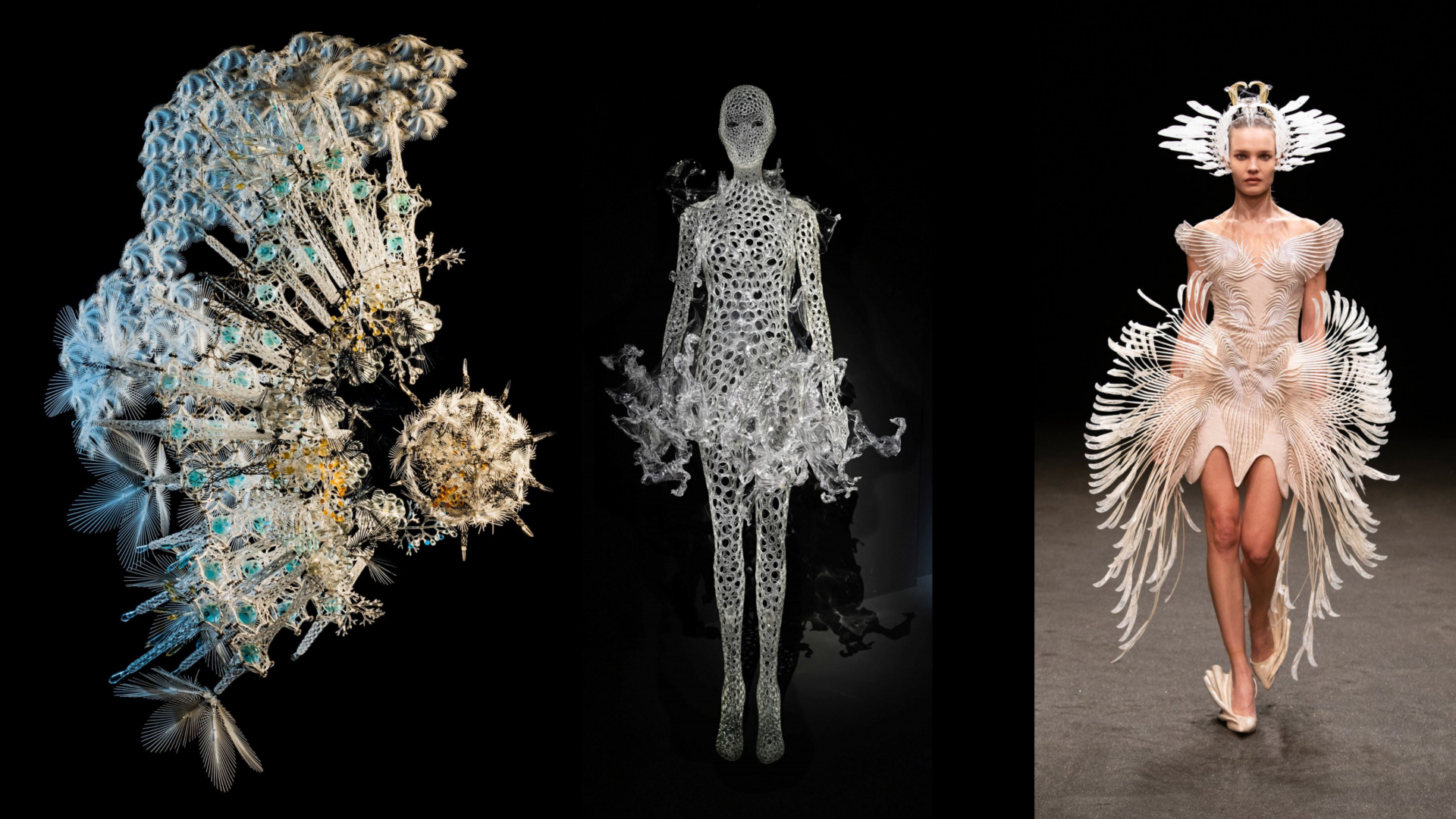
Both fashion models and architectural models communicate something that drawings alone cannot do. Bea and I are architects and we use models quite a lot to visualize, test, and refine our designs. This is a fraction of the architecture models in our Shadyside home and office. We’ve covered every inch of our interior with them!
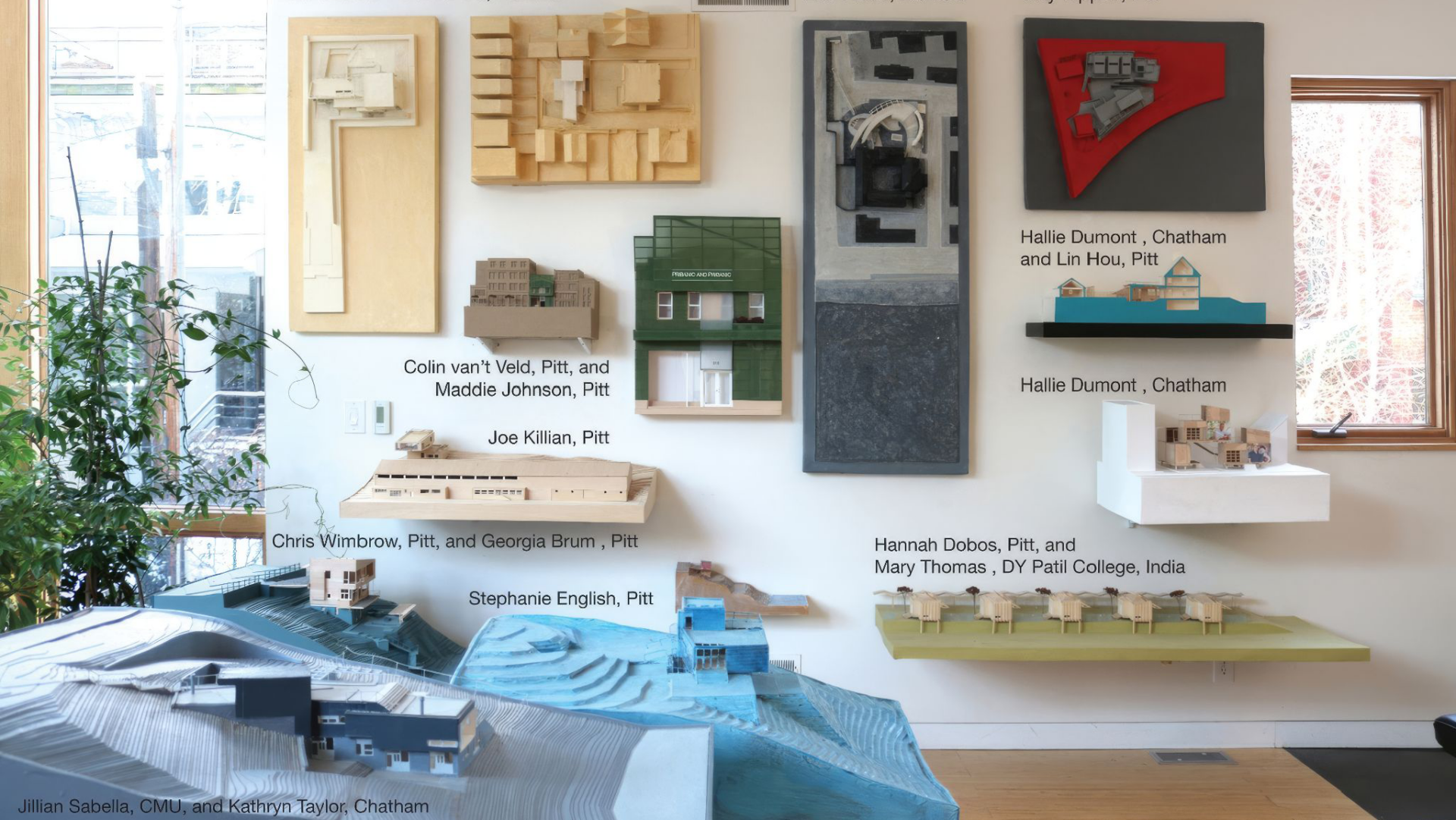
Architects built models even before the Renaissance to illustrate future buildings to eager patrons or faithful donors. Below on the left is a huge model from the 1500s showing the facade of the cathedral in Milan. Successive designers continued to update the model as the design changed over three centuries of construction.
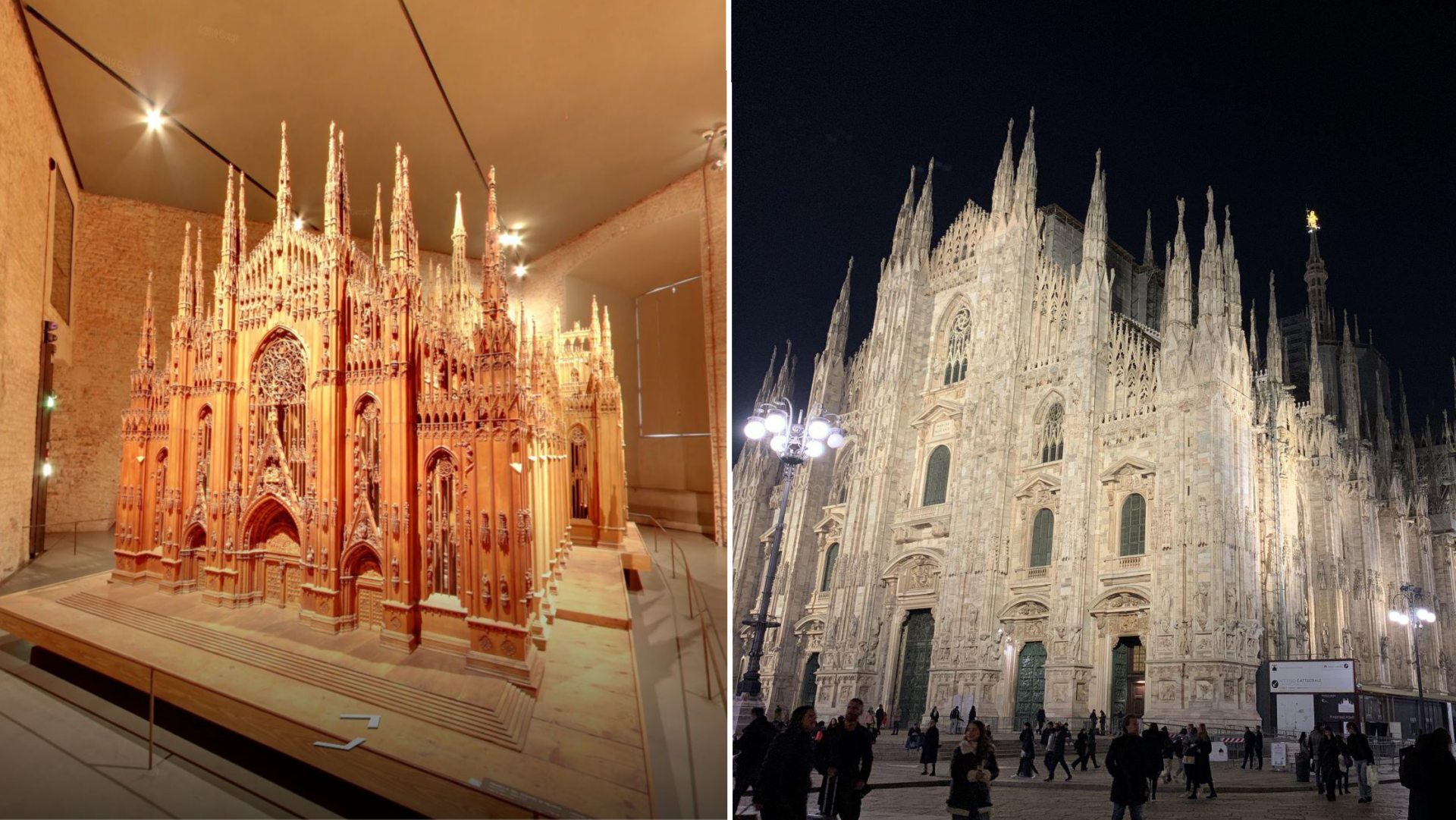
Antoni Gaudi was not only an incredible architect, he was an incredible model maker who engineered his buildings by using complex systems of weights and catenary arches, as you can see here. He literally designed his famous Barcelona cathedral, la Sagrada Família upside down!
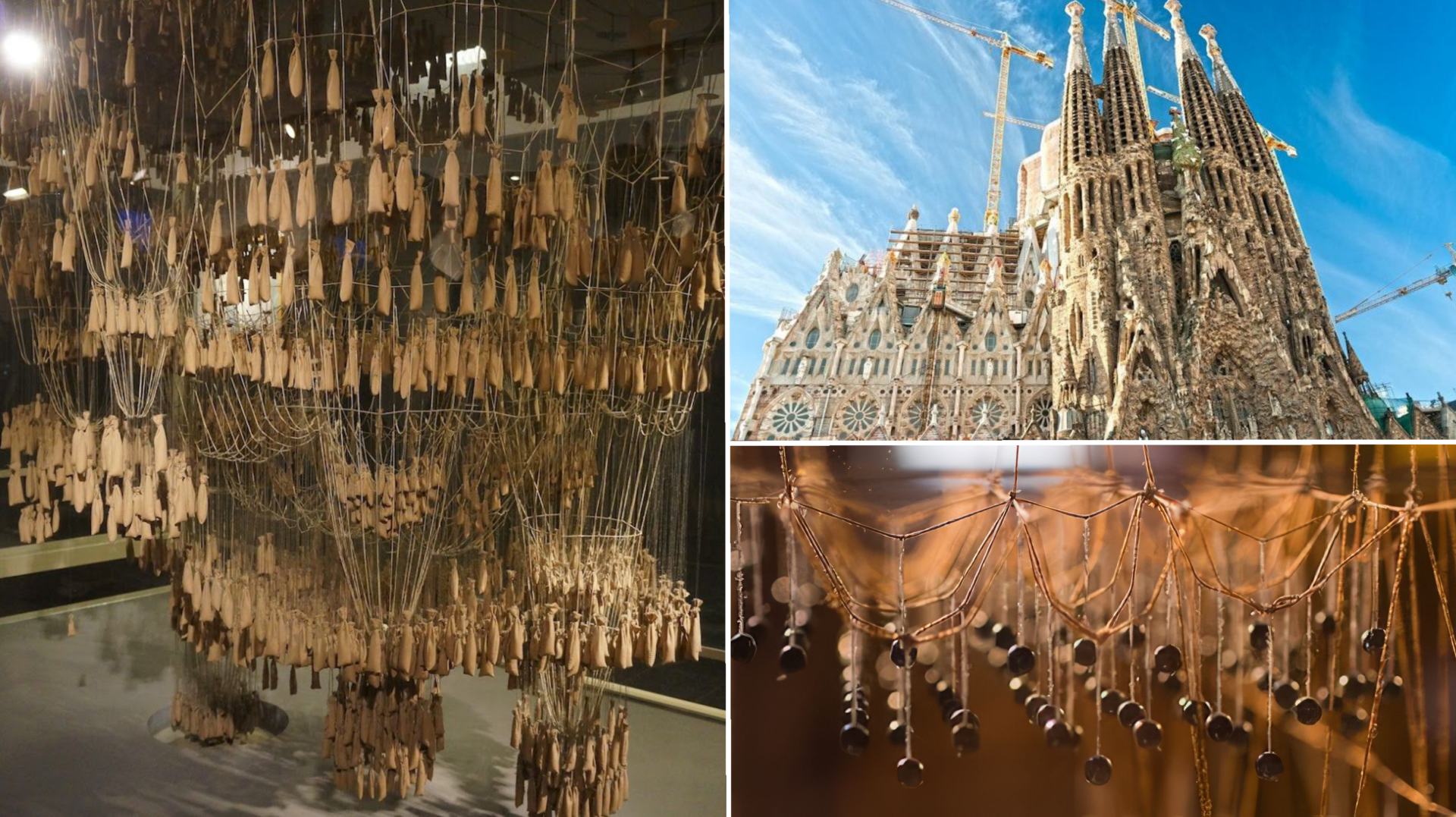
Fisher ARCHitecture Examples
One can assemble the Fisher ARCHitecture model below into a periscope. When you look through the assembled pieces, you replicate the experience of looking down the corridor illustrated to the right and understand the intended anamorphic effect: After ascending a set of stairs into the client’s offices, visitors find themselves in a corridor immersed with brightly colored, swirling patterns. Their meaning is uncertain. It is not until they look back that they learn the patterns form the outline of the client’s logo.
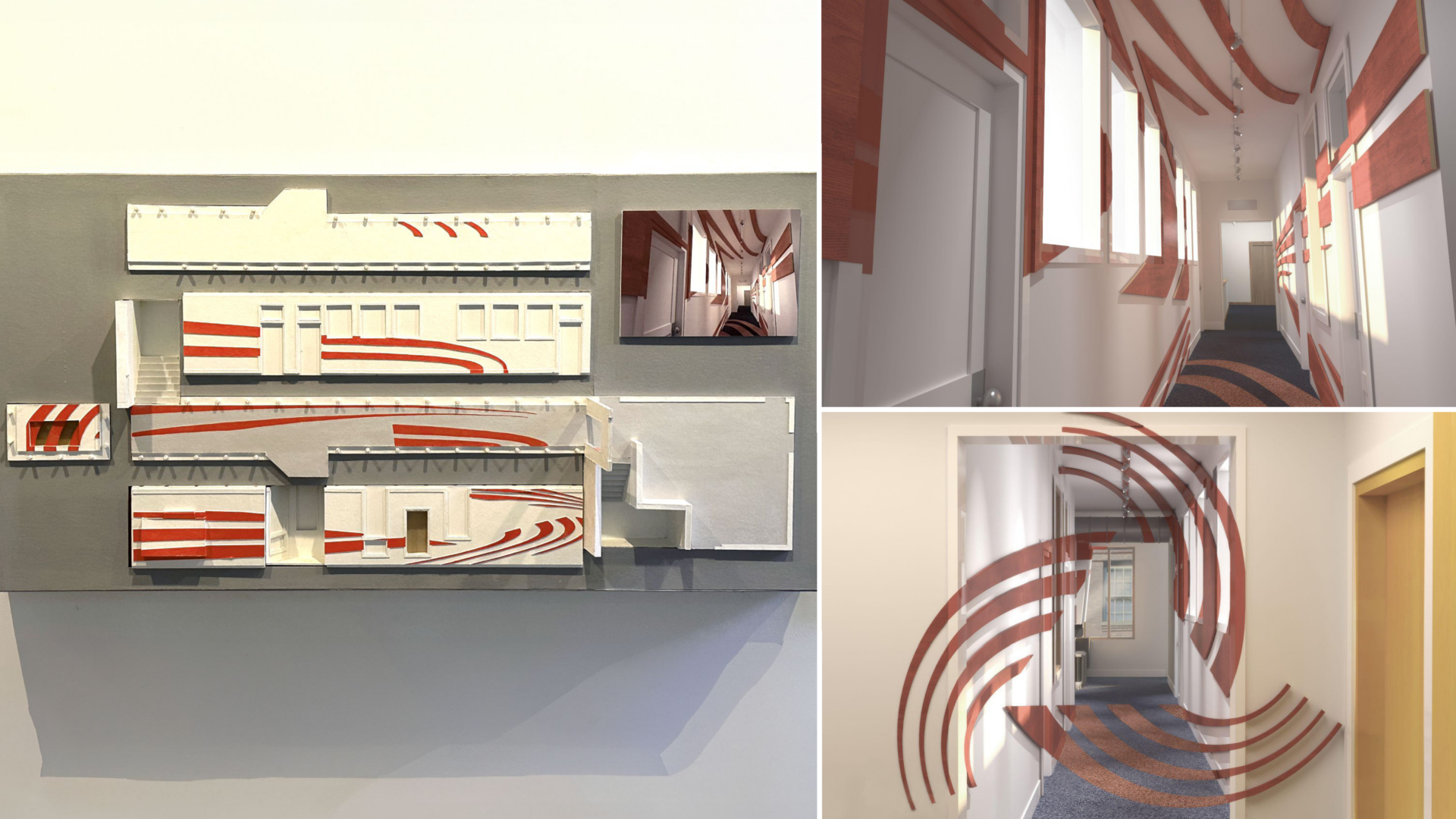
The 3d printed model below of our Morewood House is a literal representation of our design intent, which is to preserve the old walls of a decrepit home and surround them with a new home. Here, we are not testing a structure, or an effect, but we are showing the experience of a courtyard and how the new home can interact with it.
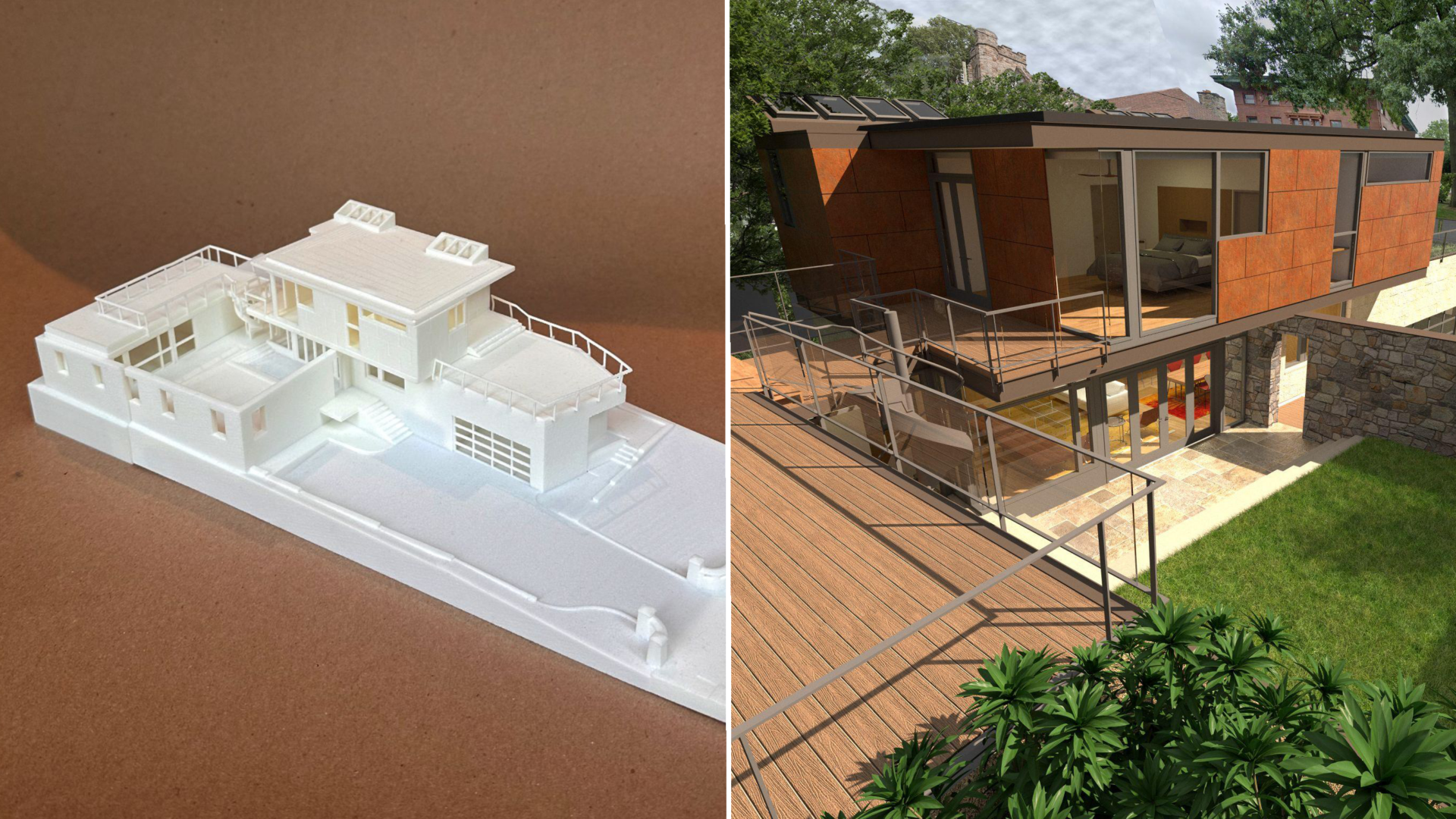
We built our Ewing House model out of welded steel to represent the close connection between the home’s metal siding and the earth sheltered berms that surround it.
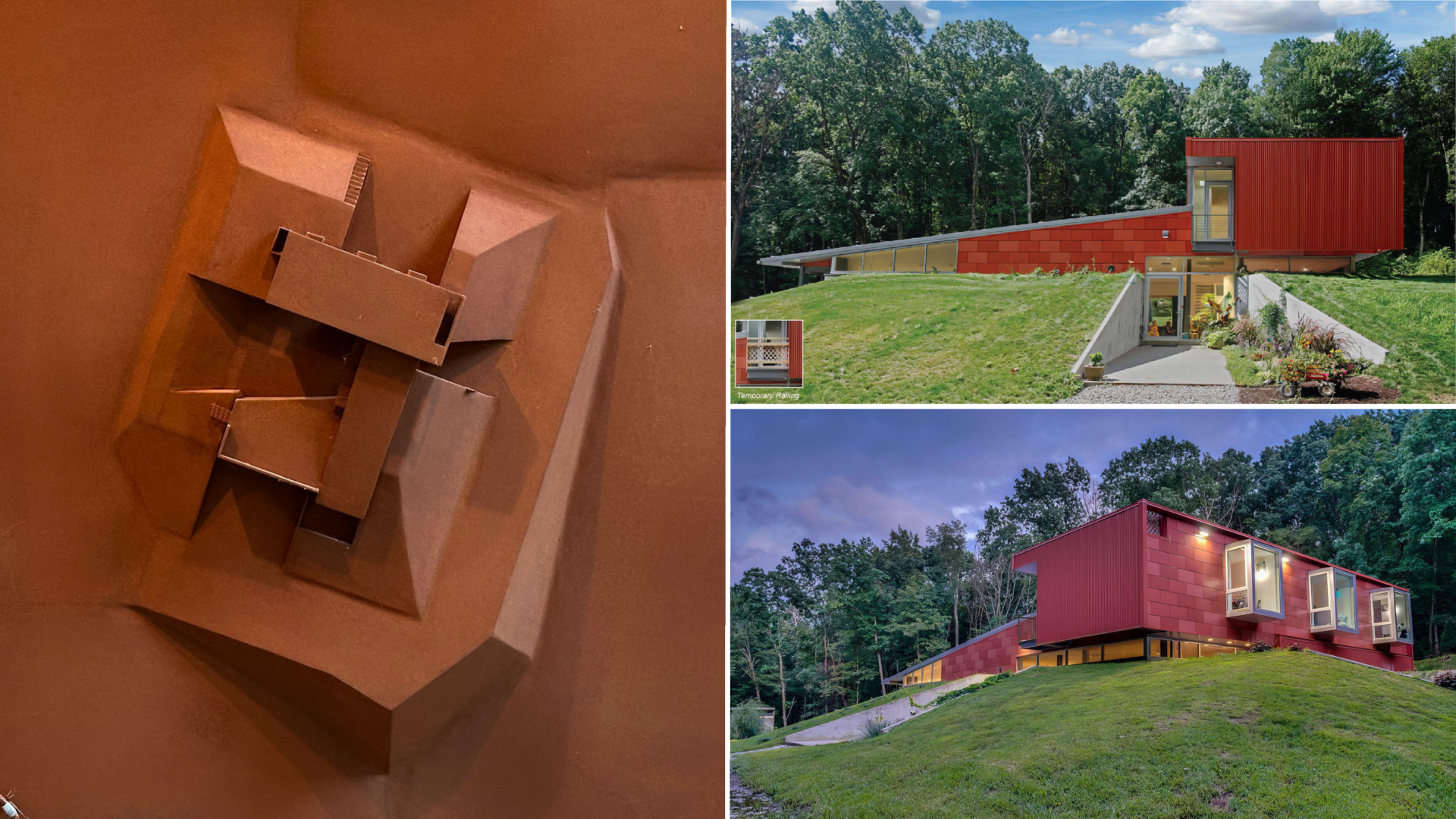
Sometimes we build models to remember projects that never happened. This is a model of Tramarlac, a project in Erie PA that was supposed to feature gabion walls, which are metal cages full of rocks. Our enterprising interns built tiny cages out of wire mesh and filled them with micro gravel to represent the idea.
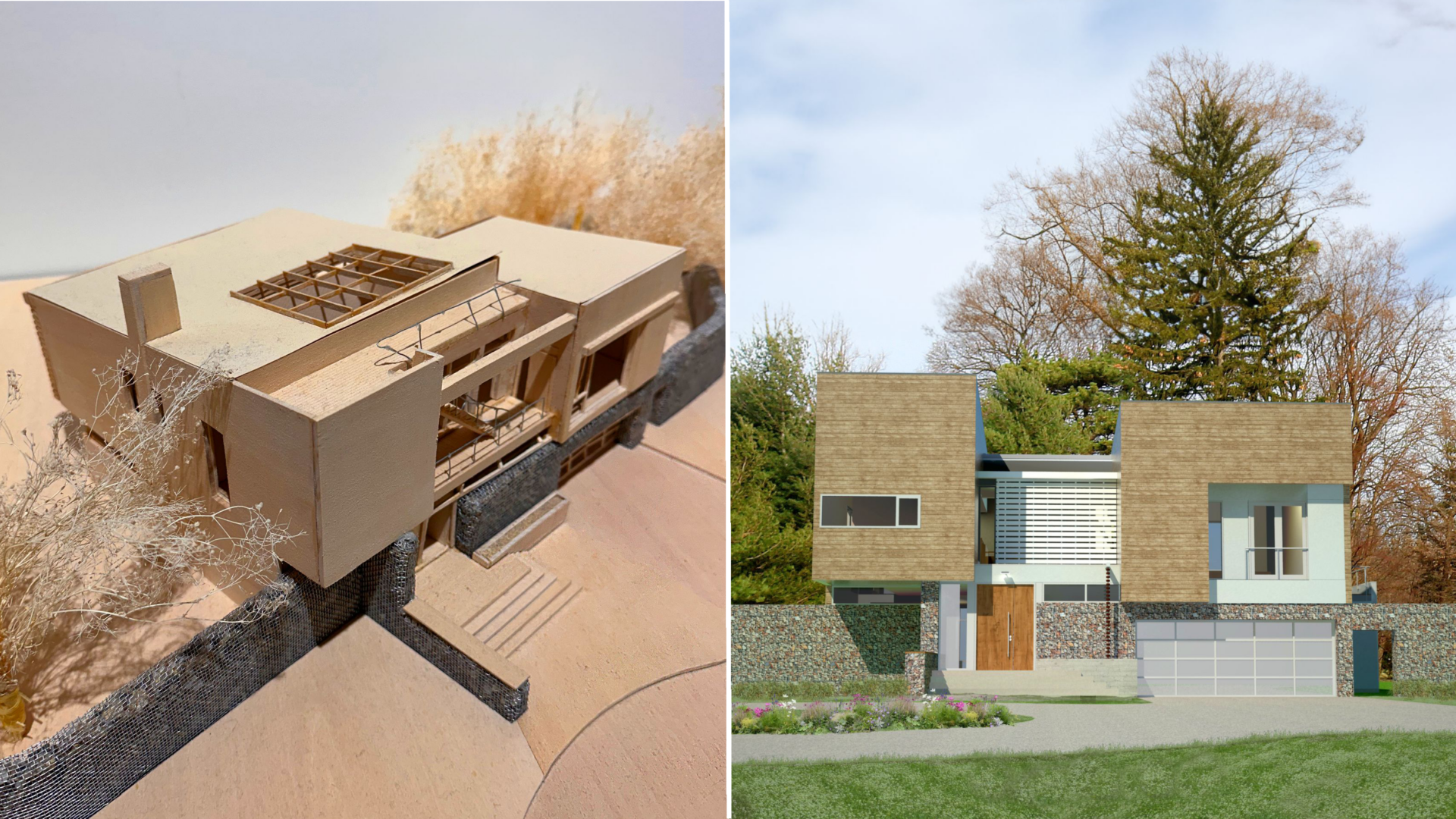
Mostly, however, we build models to illustrate ideas. They can illustrate unique experiences that may not be easy to grasp in real life. This model shows the city of Ketchikan Alaska, where I lived for a year. The red color represents the multitude of salmon that surge up Ketchikan Creek to spawn and die. We designed this model as a coffee table for Palazzetti in LA before we hung it on a wall.
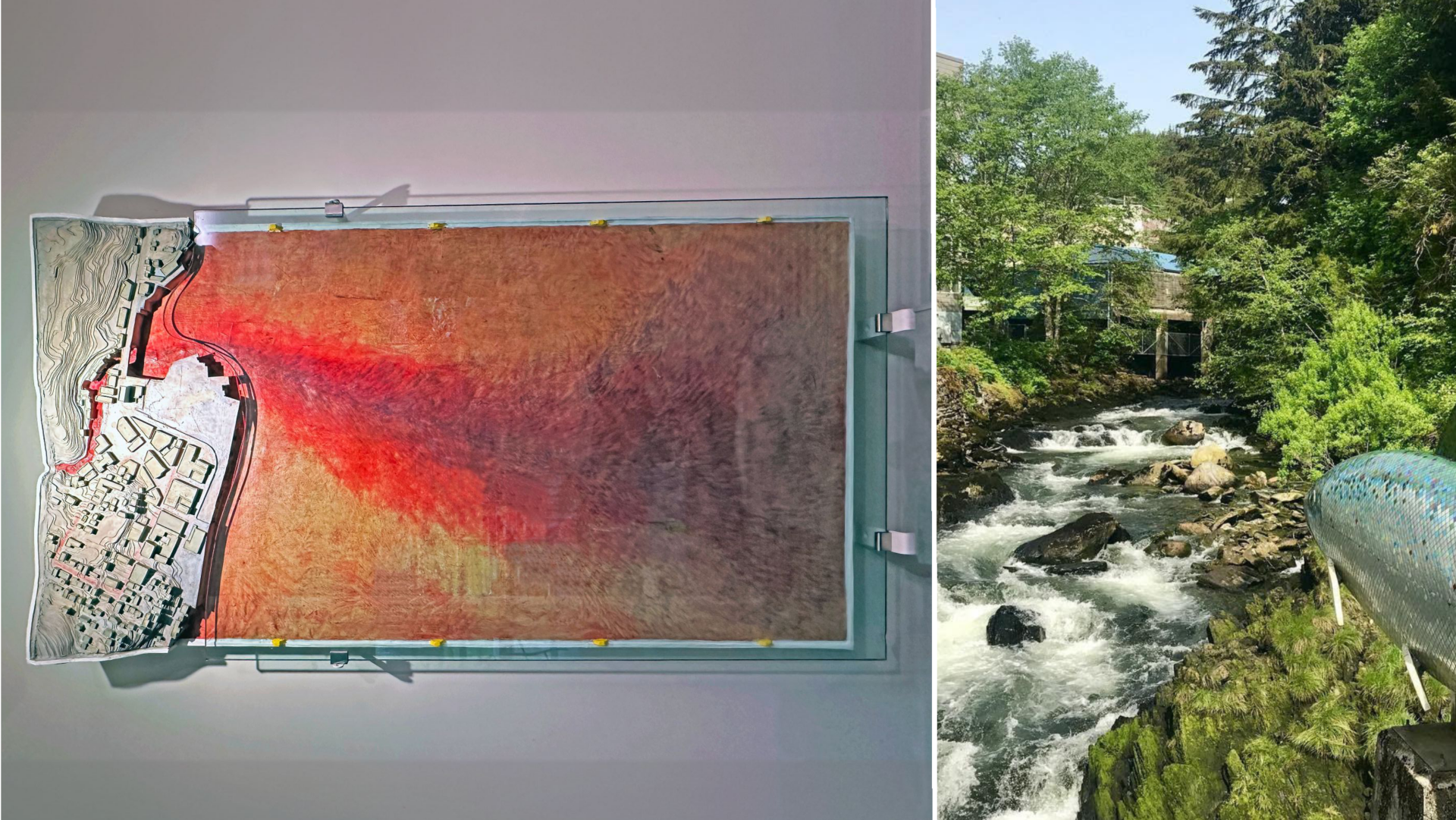
When we can, we love to test ideas at their real size. These prototypes are useful because they can prove that a concept will function in the way we intend. Our dining room table prototype is an example of a tensegrity structure. Three tension members are all that is required to secure the tabletop. The parametrically designed 3D printed model on the right displays the names of Bea’s parents. This was version one. Version two, featured here, featured spiral text that winds its way around any shape.
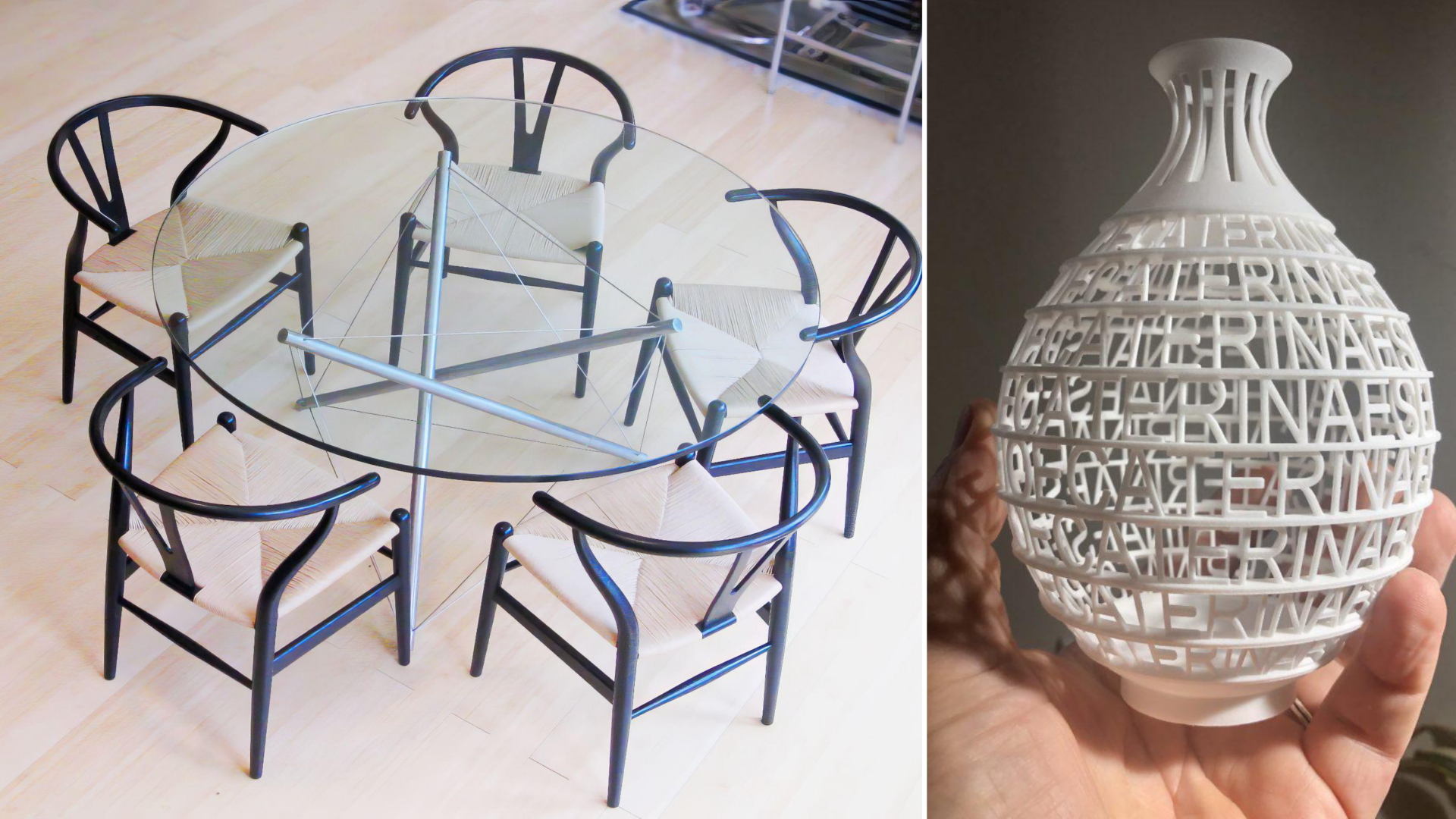
Building more than one model of the same project at different moments in the design process can communicate how a project has evolved over time. On the bottom right, you see our own home and office as it stands now. Through these models, you can see some of the other possibilities that we evaluated.

This parametric planter is one of my favorites. My rendering is to the left. The printed model is to the right. It is 3D printed in two pieces: One is attached to the wall while the other can be removed for safe watering. This is a demonstration of a full size small project prototype.
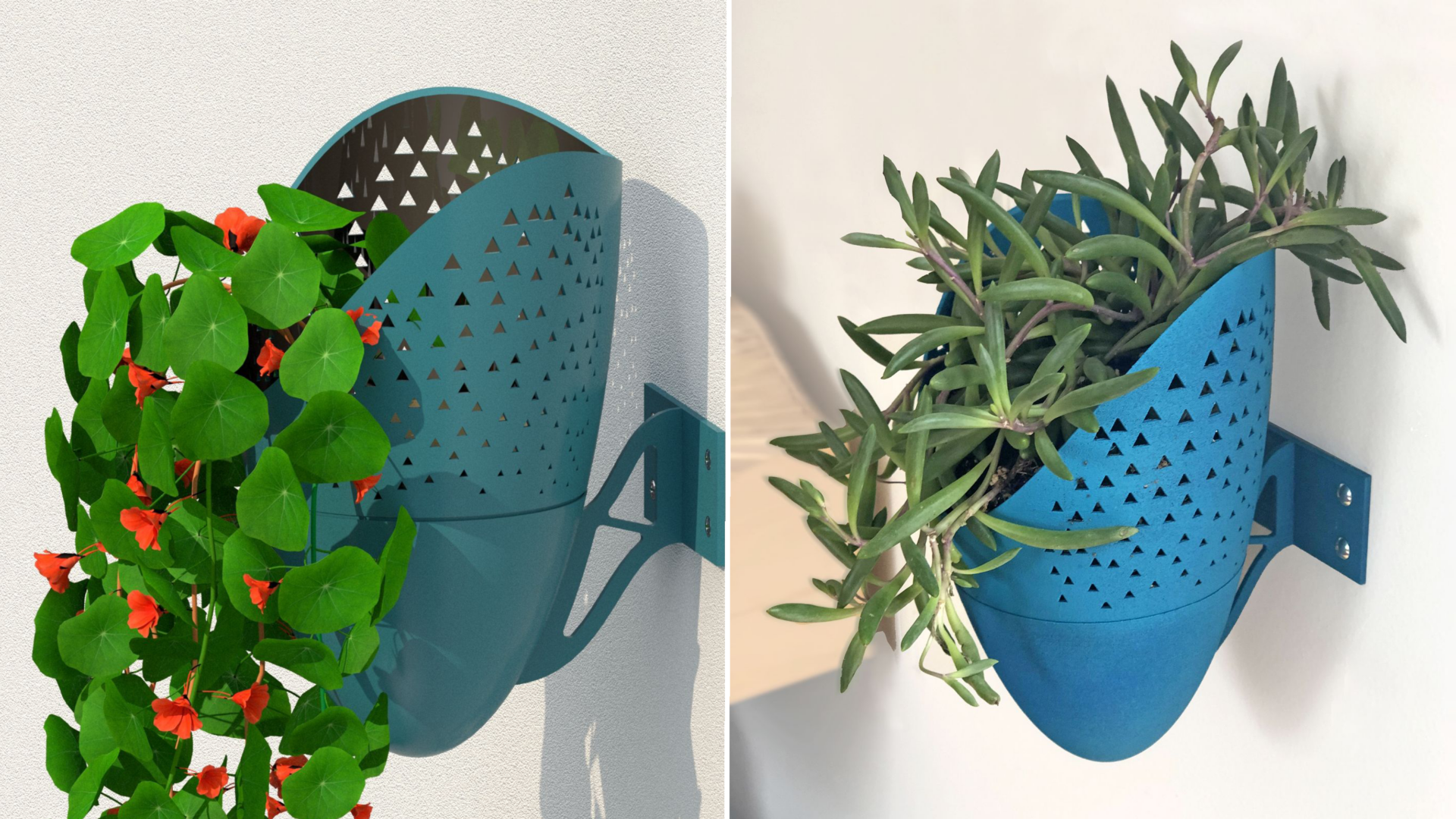
These are Dartmouth College projects. A full sized radiator in pine and mahogany is to the left. To the right is a bird scull I carved at ten times its actual size. The project completely fooled the superintendent of my dorm who actually asked me why I thought I was so special that I deserved two radiators rather than one!
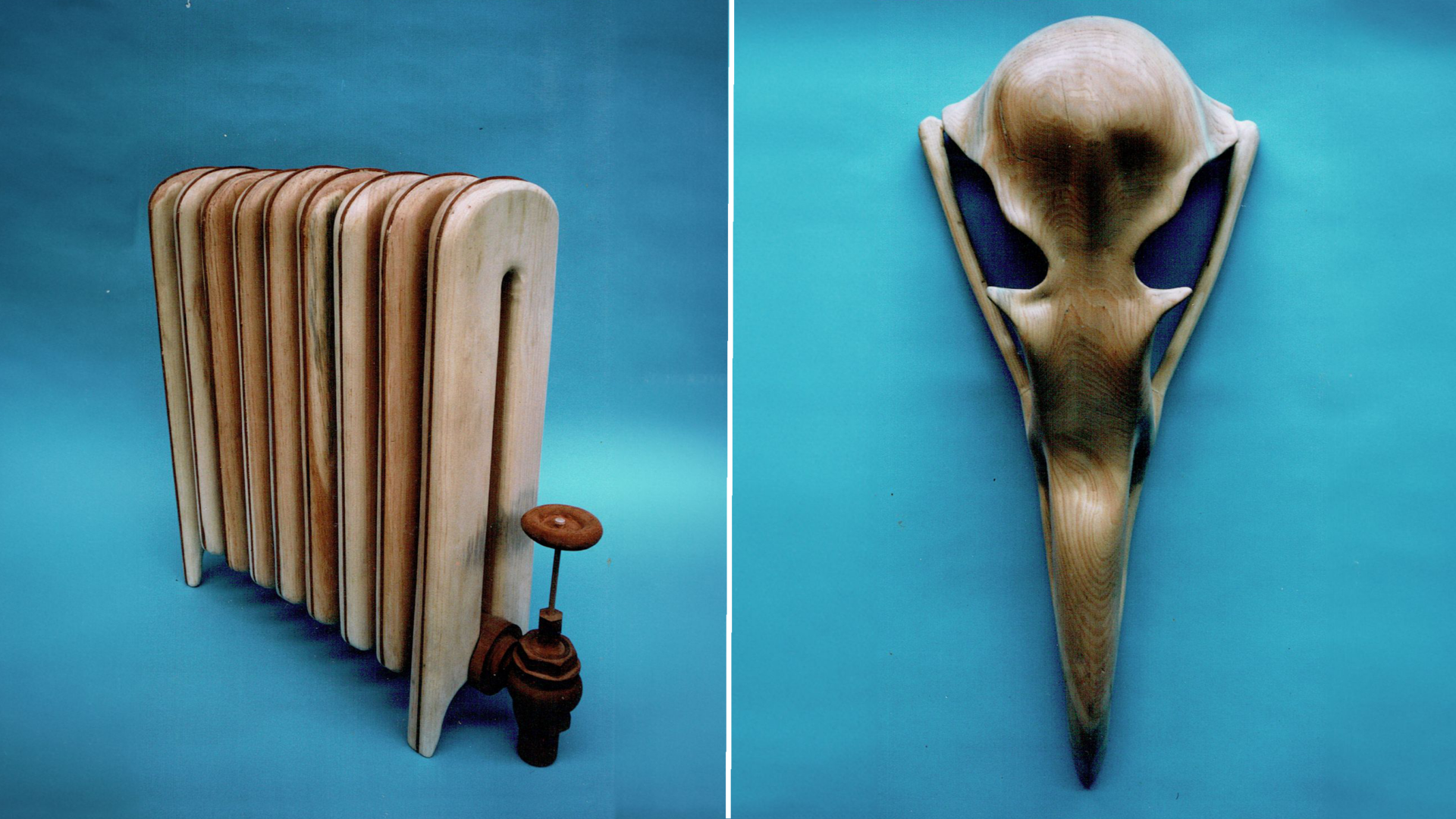
In the past, we made most of our models out of basswood or chipboard. This is a bass model of our South Side Slopes Emerald Art Glass home.
Techniques
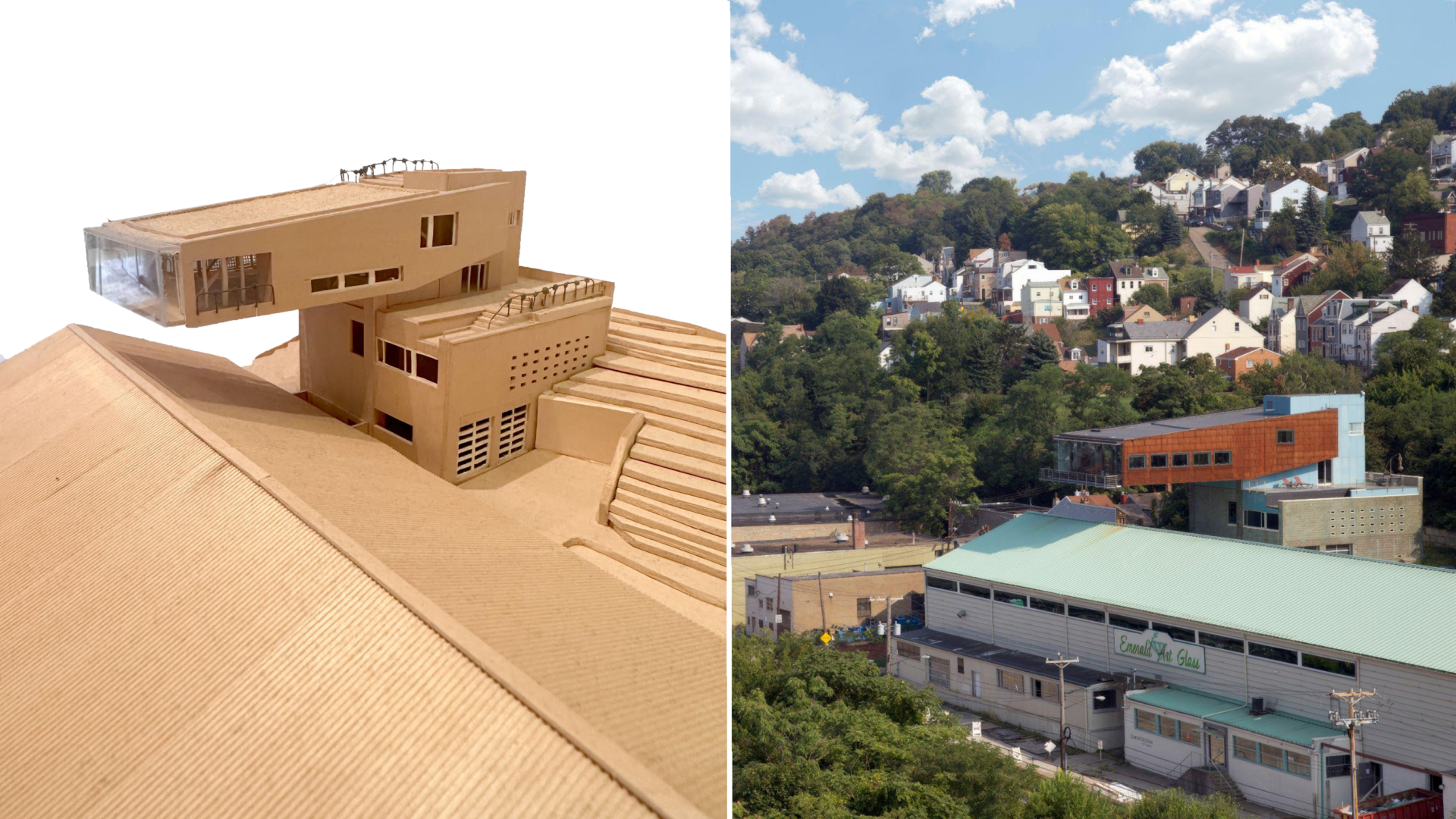
We use a variety of materials to demonstrate the project concepts. Here, a perforated plastic screen represents a perforated copper panel in our downtown 513 Court Place law office design. The ‘greenery’ is actually dried autumn sedum.
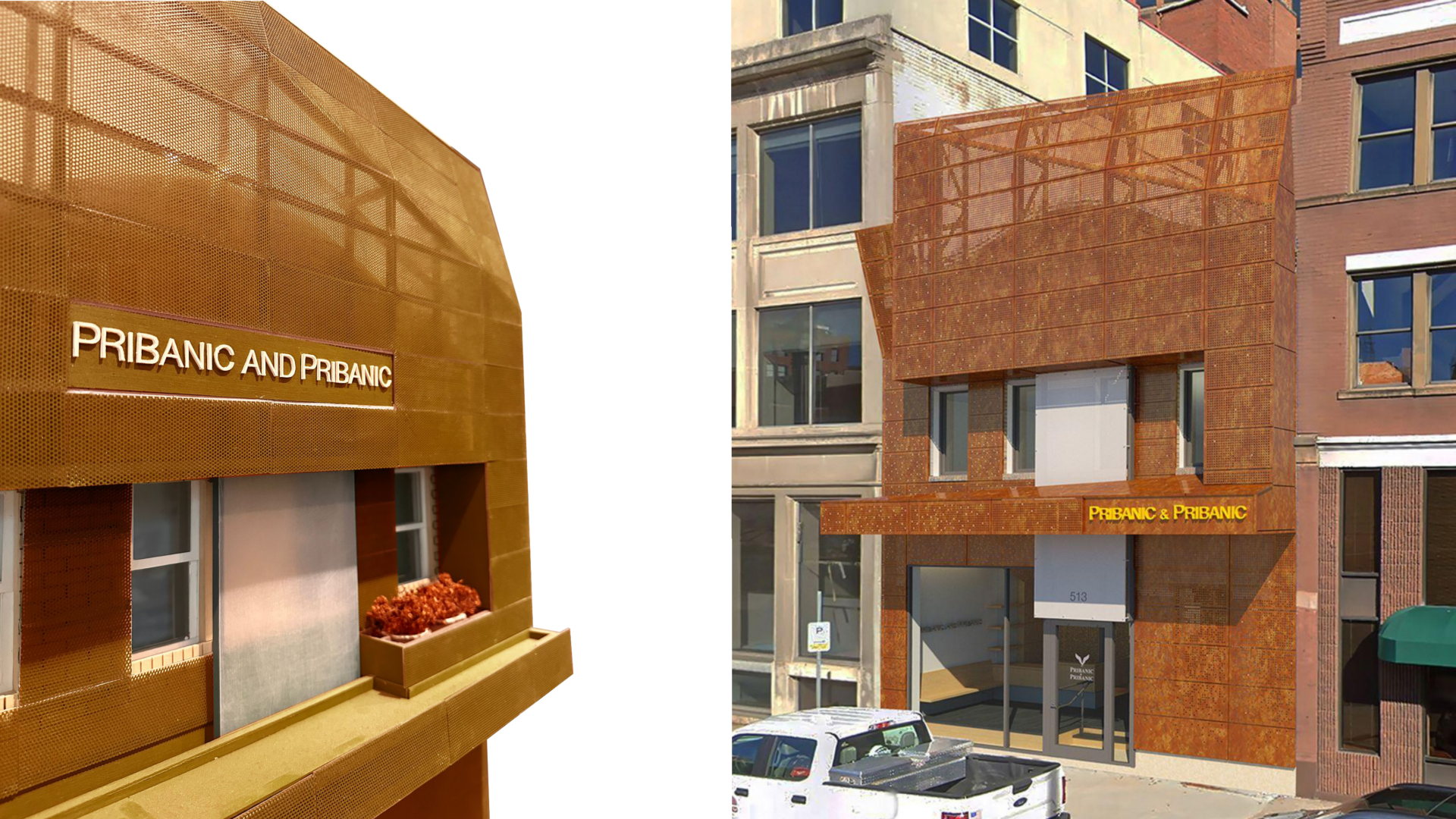
Nowadays, 3D printed models are faster to build because our design process includes ready-for-printing digital models. Typically, interns will prepare the digital model for printing that we send to a 3D printing company. Then they build the bases by hand. This our Roanoke project.
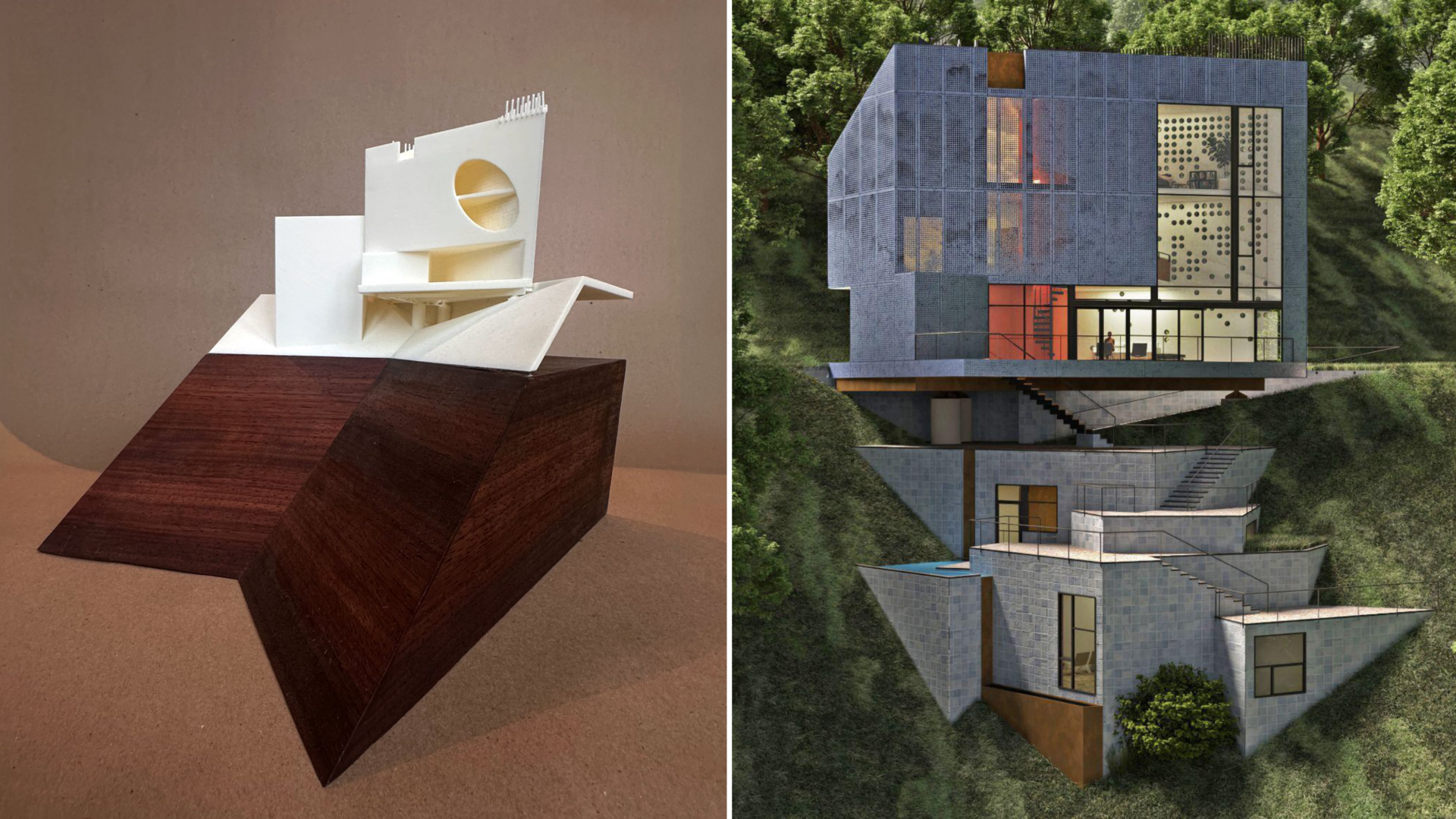
Making models is also a great way to teach. In this case, what you see here is the model of our River House, which is located on a steep slope. Our interns learned about how buildings touch the ground as they assembled the model pieces. This is “Thinking through making”.
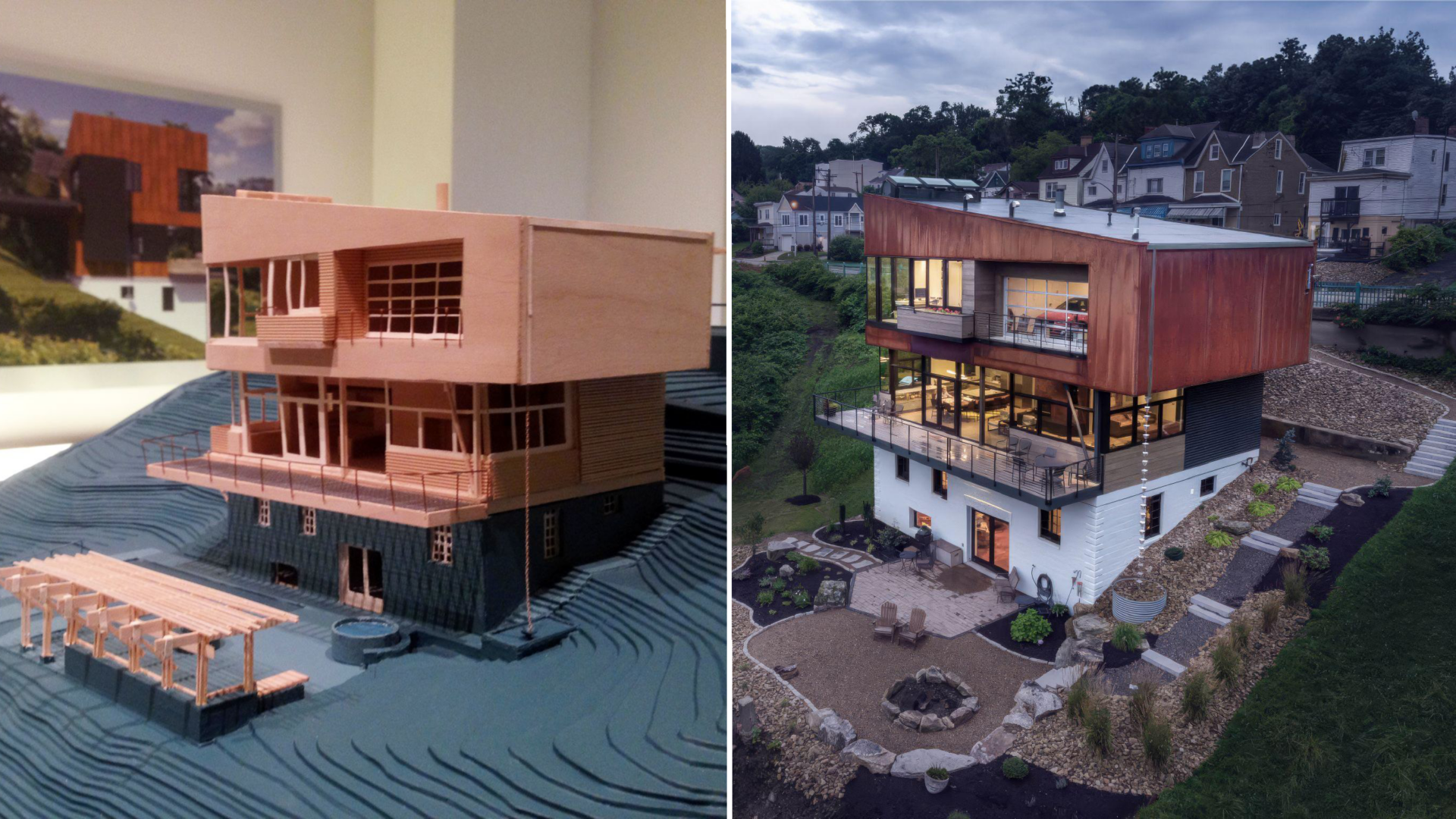
Favorites!
Eric’s favorite: The model on the right shows how the sun will project sunlit text from glass panels of this “William and Mary” competition onto the ground. The model to the left shows a full sized letter which I am displaying at the appropriate height to prove the concept.

Bea’s favorite: Below right is a rendering of our “Playhouse” competition. To the left is the laser-cut physical model with the letters, “P”,”L”, “A”, and “Y” spelled out on the side. Bea instructed the “Hack-Pittsburgh” laser to etch certain portions of the wood with letters and to cut others away altogether. We could use the same method to build the project at full scale.
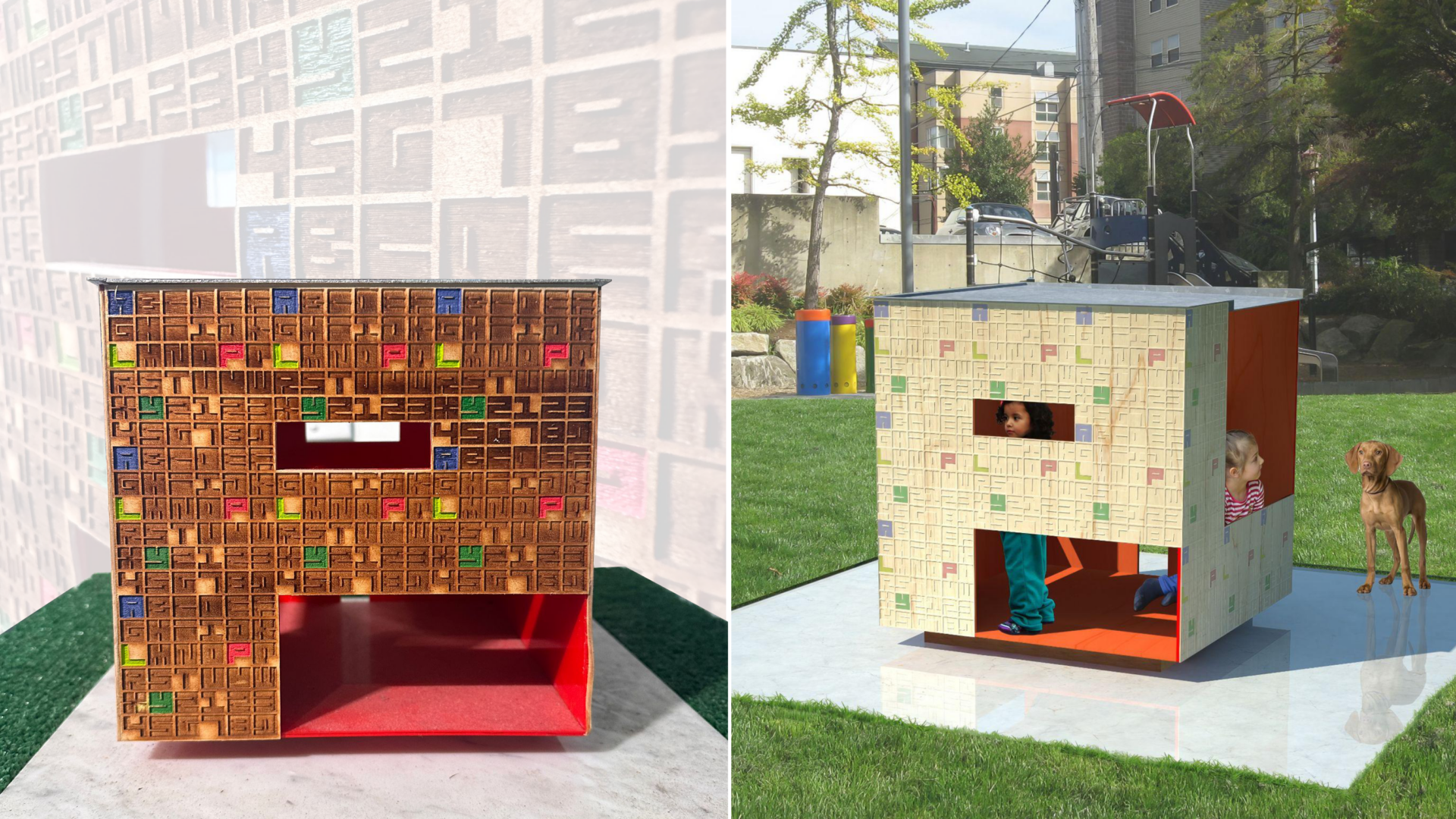
Bea and I enjoy designing and building models even if certain projects never get built. In the future, we will continue to push the boundaries of what these models can do. We have been inspired by the current architecture exhibition at the Carnegie Museum featuring the models and collages of Tatiana Bilbao, which will be showing till June 15, 2025. We recommend you check it out!
